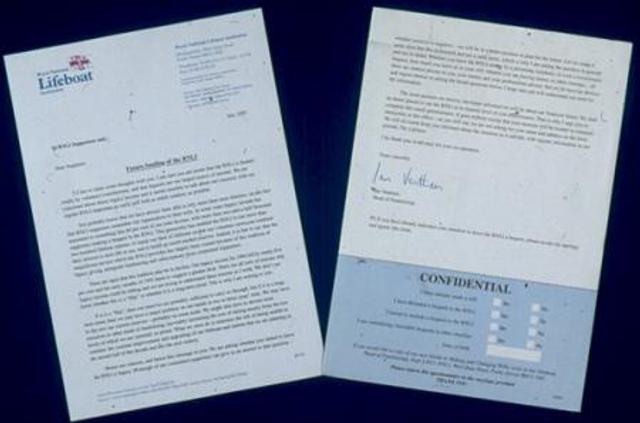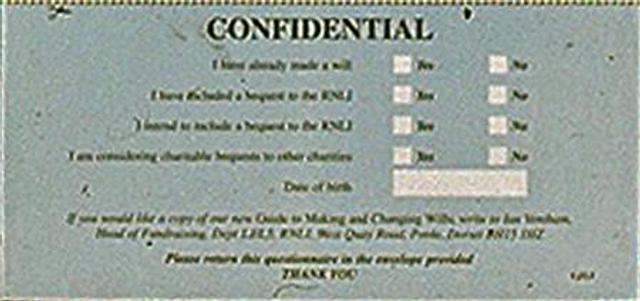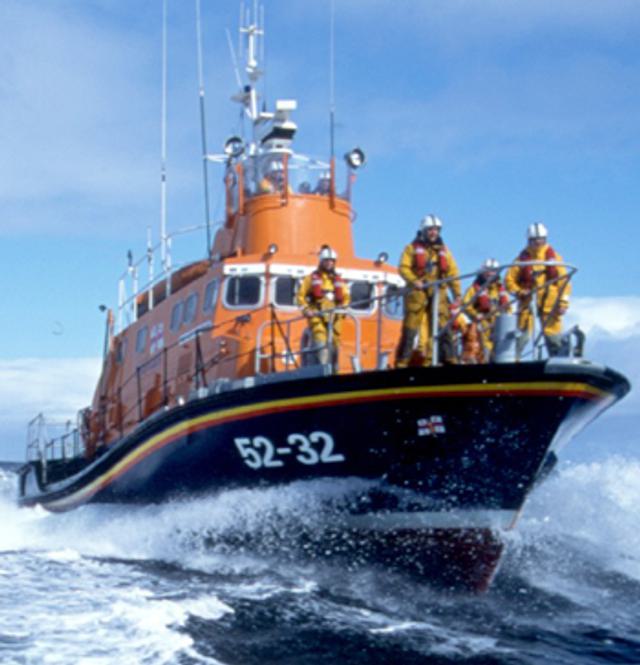RNLI: the legacy letter
- Exhibited by
- David Brann
- Added
- September 04, 2009
- Medium of Communication
- Direct mail
- Target Audience
- Legacy, major gift
- Type of Charity
- Public/society benefit
- Country of Origin
- UK
- Date of first appearance
- 1995
SOFII’s view
This is a classic example of a direct appeal to supporters, asking for information that will help plan for future income. The request is so clearly and honestly put, it was never going to do anything other than find favour with donors, who responded to it in droves. The copy must also have persuaded more than a few to get round to doing what they knew they should have done – include a legacy in their will to the RNLI.
Creator / originator
George Smith at Burnett Associates Limited
Summary / objectives
A candid, plain-speaking, respectful letter to remind supporters that RNLI relies heavily on legacy income to fund the work of the Royal National Lifeboat Institution. It explained our concern that the tradition of legacy giving may be in decline. It asked for them to help us understand whether the RNLI’s recent decline in legacy income was a blip or a trend, by answering (anonymously) a few simple questions about their own intentions about whether or not they would leave a legacy to RNLI.
Background
The RNLI is one of Britain’s largest voluntary (nonprofit) organisations. It depends on legacies (bequests) for a large part of its annual income, which is annually in excess of £100 million. Legacy income had dipped for a couple of years. At the time of this promotion the RNLI was concerned that the generation that had supported the charity so generously through legacies might be replaced by a generation that had neither the means nor the motivation to support in this way. It was decided that the best way to find out was to write to supporters to ask their intentions However, such an approach had never been tried before; legacy marketing then was comparatively in its infancy and was not widely accepted by many charities, let alone their supporters. The RNLI was traditionally risk averse in its fundraising and its supporters are generally older people, so the letter needed to be carefully crafted to avoid giving offence and potentially causing more harm than good.
Special characteristics
A direct, polite, straightforward, honest style, using good English, no jargon and taking care not to cause offence.
Influence / impact
Sending this letter provided an invaluable summary of supporters’ will-making intentions. Legacy income to the RNLI increased thereafter, which was at least in part attributed to this letter.
Details
The letter was inserted in The Lifeboat, RNLI’s magazine for supporters.
Costs
RNLI’s direct investment in this promotion was minimal, just the cost of printing and inserting the letter.
Results
This letter generated a 6.5 per cent response rate. 14,000 supporters responded giving the information requested. This clearly indicated that a very substantial amount of legacy income would be coming RNLI’s way. The letter also inevitably encouraged many supporters to think of supporting the charity with a legacy.
Merits
This promotion provided the foundation of a successful new way of promoting legacies. It is also a brilliantly clear and well-phrased letter.
You can read and download a PDF version of the letter here.





















